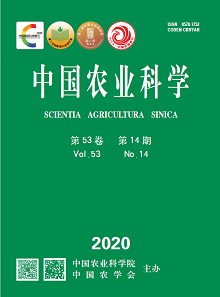【Objective】The purpose was to explore the response characteristics of green onion growth, product quality and photosynthetic characteristics of green onions to different light qualities, and to provide technical parameters for optimizing the regulation of light environment in industrial production of green onions and improve the production efficiency of green onions based on fresh green leaves. 【Method】 Under the condition of LED light source in artificial climate chamber, two different varieties of green onion ‘Zhangqiu’ and ‘Tianguang’ were used as experimental materials. The seedlings of green onion with about 15 cm in seedling height and 2-3 pieces of true leaves were cultured under five different light qualities, including blue light (B), red light (R), green light (G), yellow light (Y) and white light (W). The light intensity was controlled at (301.6 ± 12.7) μmol·m-2·s-1, the light time was 12 h/d, and the day/night temperature was controlled at 25℃/18℃, respectively. Samples were taken at 0, 10, 20, 30 and 40 days after treatment, and the photosynthetic parameters of green onions treated with different light quality were measured, as well as the growth and product quality of green onion at 40 days of culture. 【Result】The growth, product quality, leaf pigment content, photosynthetic rate (Pn), apparent quantum efficiency (AQY) and RuBP maximum regeneration rate of green onion under W were significantly better than those under monochromatic light. After 40 days of culture, the fresh weight (FW) per plant of green onion treated with W was 25.21 g, which was 7.83%, 20.28%, 35.68% and 60.78% higher than B, R, G and Y, respectively. The Pn under W was 7.63 μmol·m-2·s-1, which was 11.39%, 24.07%, 39.23% and 59.62% higher than B, R, G and Y, respectively. The photo-saturated photosynthetic rate (Pmax) under W reached 13.29 μmol·m-2·s-1, which was 5.39%, 9.47%, 15.57% and 21.48% higher than B, R, G and Y, respectively. There was no significant difference in light saturation point (LSP) among other monochromatic light, while the light compensation point (LCP) was higher in Y, followed by G and R, and lower in B and W. There were also significant differences among different monochromatic light, the FW per plant of B was significantly higher than Y, which reached 24.22 g and 16.52 g, respectively, G and R were in the middle. Pn, AQY, Pmax, carboxylation efficiency (CE) and maximum regeneration rate of RuBP of green onion leaves treated with B were also significantly higher than those of other monochromatic light. The quality indexes in green onion, such as soluble sugar, crude cellulose, pyruvate, soluble protein, free amino acid and dry matter in W, were significantly higher than those in monochromatic light. However, the B was higher among the monochromatic light, and the others were red light, green light, and yellow light in order. 【Conclusion】 The W was the most beneficial to the growth of green onions, which showed that the photosynthetic efficiency of leaves was higher and the product quality was better, and the effect of each monochromatic light treatment was higher than B, followed by R, Y and G. It reflected that green onions had strong utilization ability to W and B, which laid a foundation for further study on the formation of yield and quality of green onions by compound light.









